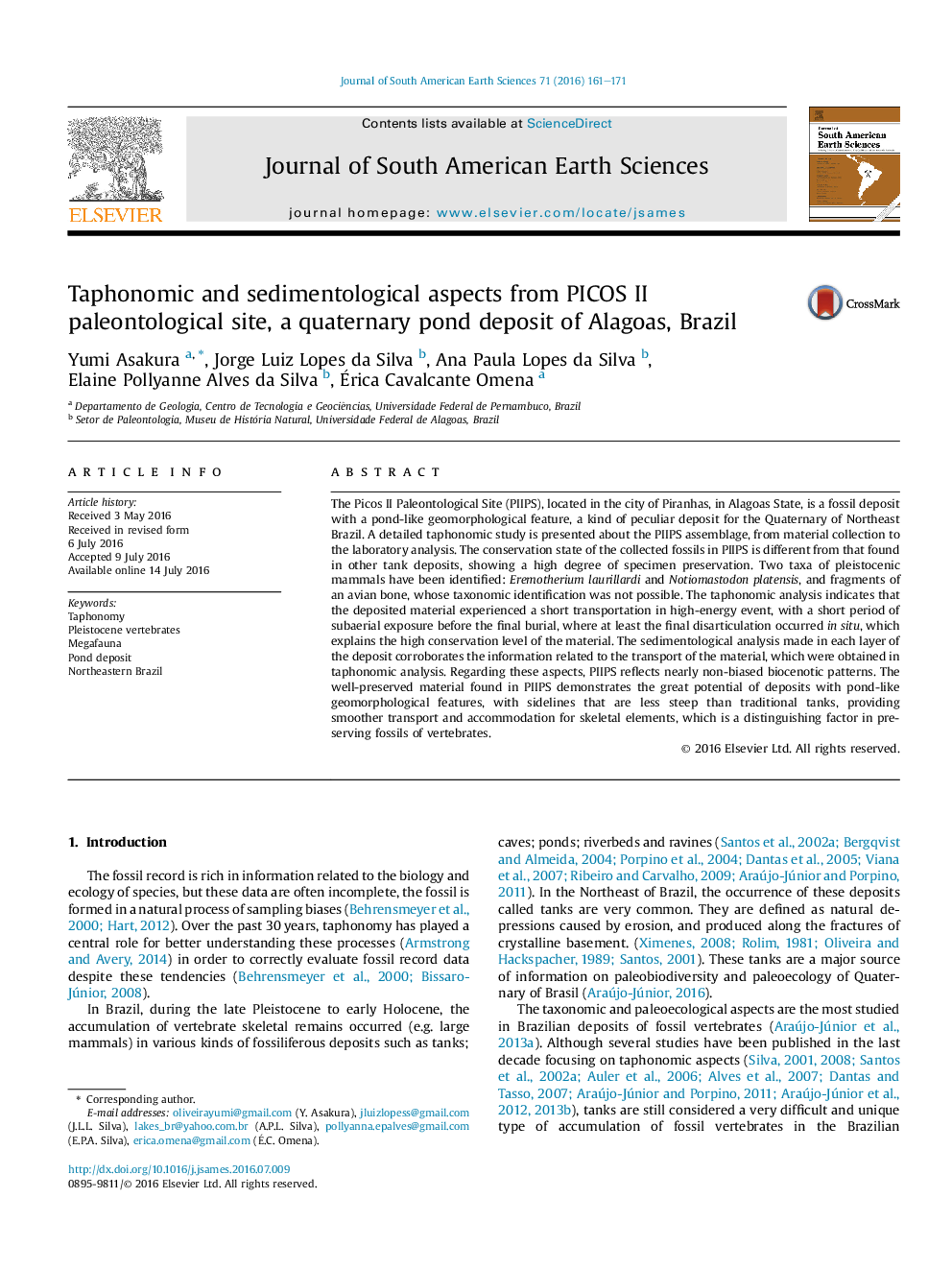| Article ID | Journal | Published Year | Pages | File Type |
|---|---|---|---|---|
| 6431307 | Journal of South American Earth Sciences | 2016 | 11 Pages |
â¢Taphonomy and sedimentology aspects of Picos II Paleontological Site (PIIPS).â¢The PIIPS has a pond-like geomorphological feature.â¢Taphonomic features of PIIPS were driven by a single high-energy event.â¢Comparison with other tank deposits reveals several biostratinomic differences.â¢Pond-like geomorphological feature offers a better fossil preservation.
The Picos II Paleontological Site (PIIPS), located in the city of Piranhas, in Alagoas State, is a fossil deposit with a pond-like geomorphological feature, a kind of peculiar deposit for the Quaternary of Northeast Brazil. A detailed taphonomic study is presented about the PIIPS assemblage, from material collection to the laboratory analysis. The conservation state of the collected fossils in PIIPS is different from that found in other tank deposits, showing a high degree of specimen preservation. Two taxa of pleistocenic mammals have been identified: Eremotherium laurillardi and Notiomastodon platensis, and fragments of an avian bone, whose taxonomic identification was not possible. The taphonomic analysis indicates that the deposited material experienced a short transportation in high-energy event, with a short period of subaerial exposure before the final burial, where at least the final disarticulation occurred in situ, which explains the high conservation level of the material. The sedimentological analysis made in each layer of the deposit corroborates the information related to the transport of the material, which were obtained in taphonomic analysis. Regarding these aspects, PIIPS reflects nearly non-biased biocenotic patterns. The well-preserved material found in PIIPS demonstrates the great potential of deposits with pond-like geomorphological features, with sidelines that are less steep than traditional tanks, providing smoother transport and accommodation for skeletal elements, which is a distinguishing factor in preserving fossils of vertebrates.
